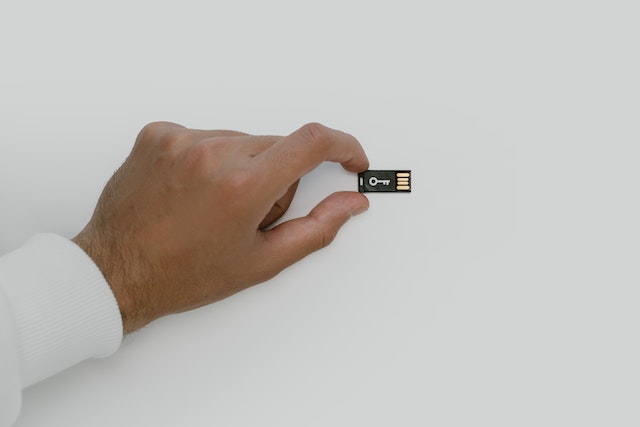According to a report by the Department of Health and Human Services, there were over 500 reported data breaches in the healthcare sector in 2021 alone, affecting over 20 million patient records. These breaches included hacking incidents, unauthorized access to patient data, and lost or stolen laptops and other devices containing sensitive patient information. These statistics emphasize the urgent need for telehealth providers to invest in robust data security measures to protect their patients’ data.
A recent study by Cybersecurity Ventures estimates that the healthcare industry will suffer a data breach every 11 seconds by the end of 2022. This is a staggering increase from the previous year, and it highlights the need for telehealth providers to stay vigilant and proactive in safeguarding patient data.
Data security is an essential part of telehealth, and it is important for telehealth providers to invest in the latest technologies to ensure the safety of patients’ data. The Health Insurance Portability and Accountability Act (HIPAA) provides a framework for telehealth providers to maintain data security standards, including guidelines on electronic communication, privacy, data storage and access, patient access to records, and more.
Key Takeaways:
- Data security is an essential part of telehealth and the Health Insurance Portability and Accountability Act (HIPAA) provides a framework for providers to maintain data security standards.
- Authentication measures, encryption of data transmissions, and secure storage of private health information are necessary for protecting patients’ data in telemedicine systems.
- Cybersecurity insurance policies provide coverage against malicious attacks on networks that could lead to theft or disruption of service delivery.
- Data breaches can result in significant financial losses as well as reputational damage; therefore it is important that telehealth providers invest in up-to-date technologies such as authentication methods and encryption for securely managing patient records while meeting regulatory requirements.
Key Factors in Telehealth Data Security
When developing telehealth systems, providers must consider several factors related to data security.
- These include authentication measures, encryption of data transmissions and storage of private health information. Authentication measures are used to identify users so that only those with proper authorization can access telehealth services.
- These can include usernames, passwords, or biometric technology such as fingerprints or retinal scans. It is also important that telehealth systems encrypt all data transmitted between the provider’s system and any other external sources.
- Telehealth providers should store privately identifiable information using secure methods such as encryption and hashing algorithms. This ensures that any third-party eavesdroppers will not be able to intercept sensitive health information sent over the internet or any other electronic network.
What is Encryption?
Encryption is a method of converting plain text into code that can only be read by someone with the key to decrypt it. Encryption algorithms are the mathematical formulas that are used to encrypt and decrypt data.
AES
AES (Advanced Encryption Standard) and RSA (Rivest-Shamir-Adleman) are examples of encryption algorithms that are commonly used in telehealth. AES is a symmetric key encryption algorithm, which means that the same key is used for both encryption and decryption.
RSA
RSA is an asymmetric key encryption algorithm, which means that different keys are used for encryption and decryption.
How do you authenticate user profiles?
Authentication is the process of verifying that a user is whom they claim to be. Authentication methods are the methods that are used to verify a user’s identity. 2-factor authentication is an example of an authentication method that can be used in telehealth.
Two-factor authentication requires users to provide two forms of identification, such as a password and a fingerprint or a password and a one-time code sent to a phone.
What are the types of Data storage solutions?
Data storage solutions are the methods that are used to store patient data. Cloud-based storage with access controls is an example of a data storage solution that can be used in telehealth.
Cloud-based storage allows data to be stored on servers that are maintained by a third party, and access controls can be used to limit who can access the data.
HIPAA requirements in Telehealth
To further protect patient privacy when using telehealth services, medical providers must also meet HIPAA requirements for privacy notices.
This includes providing clear details about how their telehealth systems handle patient information in accordance with HIPAA regulations.
Furthermore, telemedicine companies must ensure that they comply with HIPAA when sending health records electronically or by mail; this includes taking steps such as encrypting emails containing protected health information.
What is HIPAA?
In the United States, one of the main regulatory frameworks for protecting patient privacy is the Health Insurance Portability and Accountability Act (HIPAA). HIPAA includes several regulations that telehealth providers must comply with, including the Privacy Rule, the Security Rule, and the Breach Notification Rule.
The Privacy Rule
This rule sets national standards for protecting individuals’ medical records and other personal health information. It establishes rules and limits on who can look at and receive individuals’ health information, with some exceptions. It also gives individuals certain rights over their health information, like the right to see and get copies of their health records.
The Security Rule
This rule sets national standards to protect individuals’ electronic personal health information that is created, received, used, or maintained by a covered entity. The Security Rule requires appropriate administrative, physical, and technical safeguards to ensure the confidentiality, integrity, and availability of electronically protected health information.
The Breach Notification Rule
This rule requires covered entities and their business associates, to provide notification following a breach of unsecured protected health information. The rule requires prompt notification to affected individuals, the Secretary of Health and Human Services, and, in certain circumstances, prominent media outlets.
Overall, telehealth providers must take a proactive approach towards ensuring their compliance with HIPAA regulations in order to protect their patient’s private information from unauthorized access or misuse by third parties.
Cybersecurity Insurance
Telehealth providers should consider investing in cybersecurity insurance policies to protect themselves from malicious attacks on their networks which could lead to the theft of confidential data or disruption of service delivery.
Cybersecurity insurance policies provide coverage for legal costs in case a breach occurs, as well as reputational damage resulting from cyberattacks involving patient data breaches or system failures causing disruption of care delivery processes due to downtime or loss of access to telemedicine platforms.
What is the Impact of a Data Breach?
Data breaches can result in significant financial losses for telehealth providers. For example, if a data breach results in the theft of patient data, the provider may be liable for the cost of credit monitoring for affected patients, legal fees associated with any lawsuits that may result from the breach, and any fines imposed by regulatory authorities.
Breaches can also result in a loss of trust from patients. Patients may be less likely to trust telehealth providers that have had a data breach and may be more likely to seek healthcare services from other providers. This can result in a loss of revenue for the provider.
These breaches can also result in significant damage to a provider’s reputation. For example, if a data breach results in the release of sensitive patient information, the provider’s reputation may be tarnished, and the provider may have difficulty attracting new patients.
Final thoughts
Investing in up-to-date technologies such as authentication methods and encryption for data transmission is necessary for securely managing patients’ medical records while meeting regulatory requirements for protecting patient privacy during telemedicine visits.
Cybersecurity insurance policies can also provide additional protection against malicious cyberattacks resulting in compromised patient data or service interruptions which could have serious repercussions for healthcare organizations and their patients alike.
Data security is a vital consideration for any telehealth provider. By investing in the latest data security technologies and following HIPAA Guidelines, telehealth providers can help ensure that patients’ data is protected. For more information about affordable data security options, join our mailing list for more up-to-date healthcare industry guidelines.
This expert opinion post was made in collaboration with Hasan Mahmud from Cyber Aeronautycs Ltd. – a leading data infrastructure security expert, with expertise in HIPAA-compliant cybersecurity solutions.
BLOG AUTHOR
Dr. Ismail Sayeed
Dr. Sayeed is the Medical Director of ViOS, Inc. He is a deeply committed physician entrepreneur & medical blog writer. While building the global infrastructure of the VIOS Clinic, he is dedicated to educate people on the potential of specialist telemedicine for managing chronic diseases.
Read more about him in his author bio

